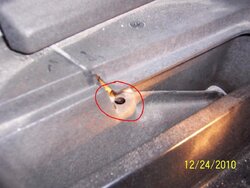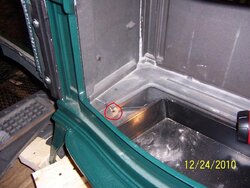Hello all,
Looking for some input... I have been burning my VC encore cat for 3 years now. I'm sure the owners manual is a little fudged when they claim a 12 hour burn time but I am curious to see what other burn times VC encore cat owners are getting. I have NEVER gotten more that 9 hours on an overnight burn and have tried everything. I have about 25 ft of stainless steel chimney liner in my exterior chimney. The stove sits in the fireplace. I never have a draft issue... I do have to be careful she doesn't run away on me. I check the gaskets every year and burn only seasoned white oak, hickory and locust, MC below 20%. When I rake the coals, load up with big thick "overnight" splits, engage the cat at 500 and shut the air down all the way she will give me 9 hours on a good night, the average is more like 8... I'm talking usable coals in the morning. I dont think I have an air leak issue because I burn dry wood and the stove top never gets over 625 with the air closed all the way... if I open the air, look out. I went to my local stove shop and they said that was about average. What are you guys and gals getting and is there anything I can do different?
Thanks all.
Looking for some input... I have been burning my VC encore cat for 3 years now. I'm sure the owners manual is a little fudged when they claim a 12 hour burn time but I am curious to see what other burn times VC encore cat owners are getting. I have NEVER gotten more that 9 hours on an overnight burn and have tried everything. I have about 25 ft of stainless steel chimney liner in my exterior chimney. The stove sits in the fireplace. I never have a draft issue... I do have to be careful she doesn't run away on me. I check the gaskets every year and burn only seasoned white oak, hickory and locust, MC below 20%. When I rake the coals, load up with big thick "overnight" splits, engage the cat at 500 and shut the air down all the way she will give me 9 hours on a good night, the average is more like 8... I'm talking usable coals in the morning. I dont think I have an air leak issue because I burn dry wood and the stove top never gets over 625 with the air closed all the way... if I open the air, look out. I went to my local stove shop and they said that was about average. What are you guys and gals getting and is there anything I can do different?
Thanks all.



